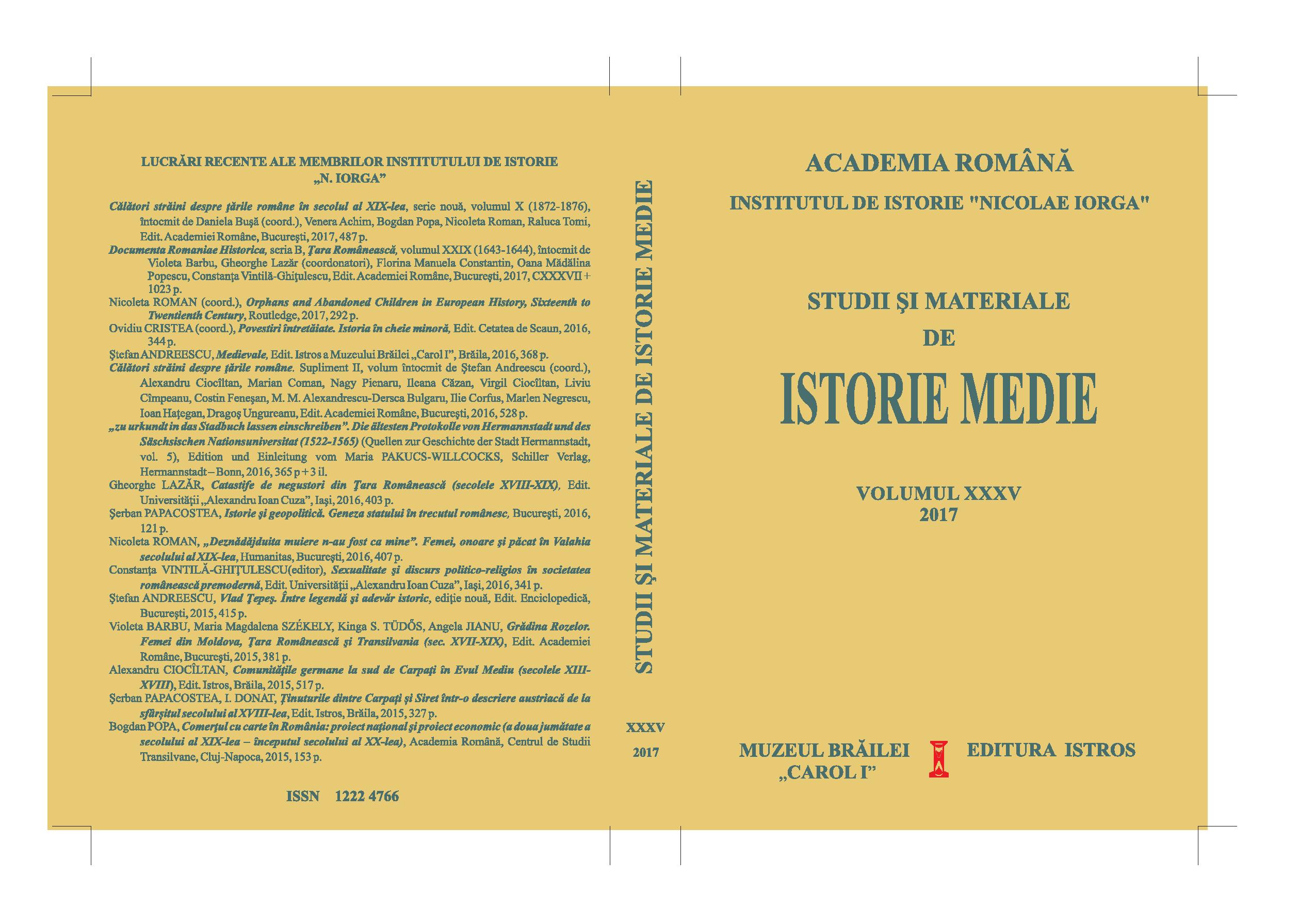Câteva date despre mănăstirea Trei Ierarhi din Iaşi, şi nu numai, desprinse din documentele arhivei româneşti de la Protaton (Muntele Athos)
New data on the Trei Ierarhi monastery from Iaşi and other information from the Romanian archive of Protaton (Mount Athos)
Author(s): Petronel ZahariucSubject(s): History, Middle Ages, Modern Age
Published by: Institutul de Istorie Nicolae Iorga
Keywords: Trei Ierarhi Monastery; Mount Athos; Moldavia; Grigore Ureche; the 17th and 18th centuries
Summary/Abstract: This article presents lesser known or previously unpublished material on the history of the Trei Ierarhi Monastery, found in the rich archive of Protaton. As the Trei Ierarhi Monastery was, and still is, located in the heart of the city of Iaşi, many Moldavian documents from the 17th and 18th centuries related to different monasteries (e.g. Golia, Caşin, Copou) and to various families (e.g. Ureche, Hăbăşescu, Buhuş, Ruset) had been deposited in its archive. The present study investigates the monastic archive of the Trei Ierarhi, which is preserved today in the Romanian and Athonite archives, and focuses on the lesser known history of the making and the growth of the monastic domain. The domain of the Trei Ierarhi Monastery included several tens of villages, owned entirely or partially, as well as numerous other properties (grapevines, ponds, bridges, mills, houses, merchants’ shops). The geographical nuclei of the domain were the Moldavian regions of Iaşi, Bacău and Truşeşti. The domain grew gradually and one may identify three distinct phases. The first one is related to the donations given to the monastery by its founder, Basil Lupu, by his family and by his loyal boyars. The second phase of growth, less impressive, was due to the donations made by the descendants of those boyars and merchants whose good fortune in Moldavia was due to Basil Lupu. During the third phase, which covers the whole of the 18th century, the properties of the monastery had been preserved and increased due to the Moldavians’ devotion for Saint Paraskeva.
Journal: Studii şi Materiale de Istorie Medie (SMIM)
- Issue Year: 2017
- Issue No: XXXV
- Page Range: 109-165
- Page Count: 57
- Language: Romany
- Content File-PDF

